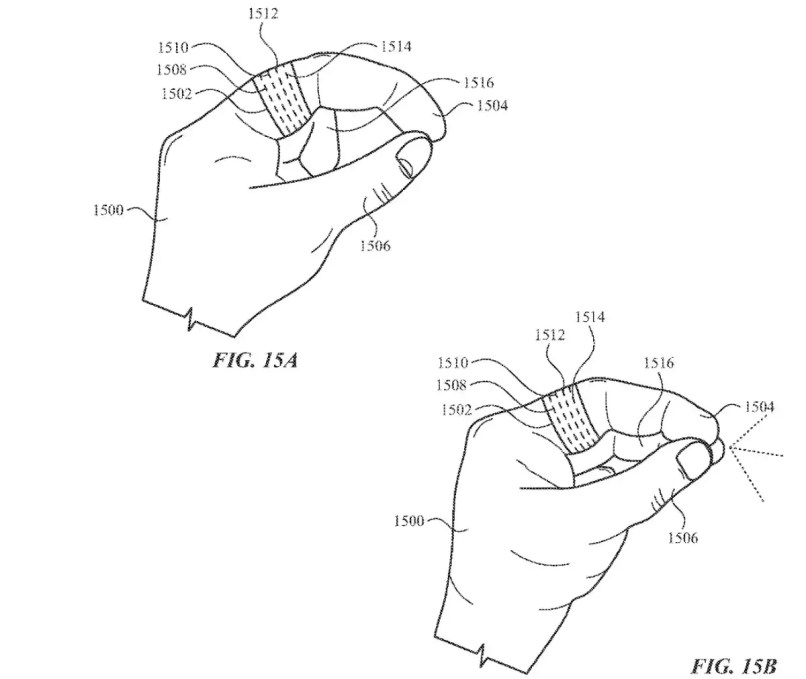Apple has applied for a patent (number US 11625098 B2) for “skin-to-skin contact detection.” It’s yet another patent that hints at an “Apple Ring.”
About the patent
The patent relates generally to systems and methods of detecting skin-to-skin contact, and more particularly, to detecting contact between two hands or between two fingers for input in virtual reality or augmented reality environments. In the patent, Apple notes that many types of input devices are presently available for performing operations in a computing system, such as buttons or keys, mice, trackballs, joysticks, touch sensor panels, touch screens and the like.
In some examples, contact between two different parts of a user’s body may be used for input. For example, cameras in a head-mounted display can be used to track movement of fingers to detect a finger in contact with an opposite hand, or to track movement of a finger along an opposite hand surface.
Additionally, a radio frequency-based system can be used to detect a finger in contact with an opposite hand, or to track movement of a finger along an opposite hand surface.
These images show an Apple Ring equipped with skin-to-skin detection features.
However, Apple says that camera-based systems and/or radio frequency-based systems may have difficulty detecting the difference between a finger touching the opposite hand or proximate to without contacting (hovering above) the opposite hand. Additionally, camera-based systems require the finger and opposite hand be in the field of view of the cameras for operation. Apple wants an Apple Ring to be able to detect contact between a first body part and a second body part.
Such a device could be used to control a Mac that’s equipped with gesture recognition technology. It could also be used in tandem with the “RealityPro,” Apple’s rumored augmented reality/virtual reality device.
Summary of the patent
Here’s Apple’s abstract of the patent: “Contact or movement gestures between a first body part and a second body part can be detected. Sense circuitry can be configured to sense a signal at the sense electrode (e.g., configured to contact the second body part) in response to a drive signal applied to the drive electrode (e.g., configured to contact the first body part).
“Processing circuitry can be configured to detect contact in accordance with a determination that one or more criteria are met (e.g., an amplitude criterion and a non-distortion criterion). Additionally or alternatively, processing circuitry can be configured to detect a movement gesture in accordance with a determination that one or more criteria are met (e.g., a contact criterion and a movement criterion).”
Article provided with permission from AppleWorld.Today

